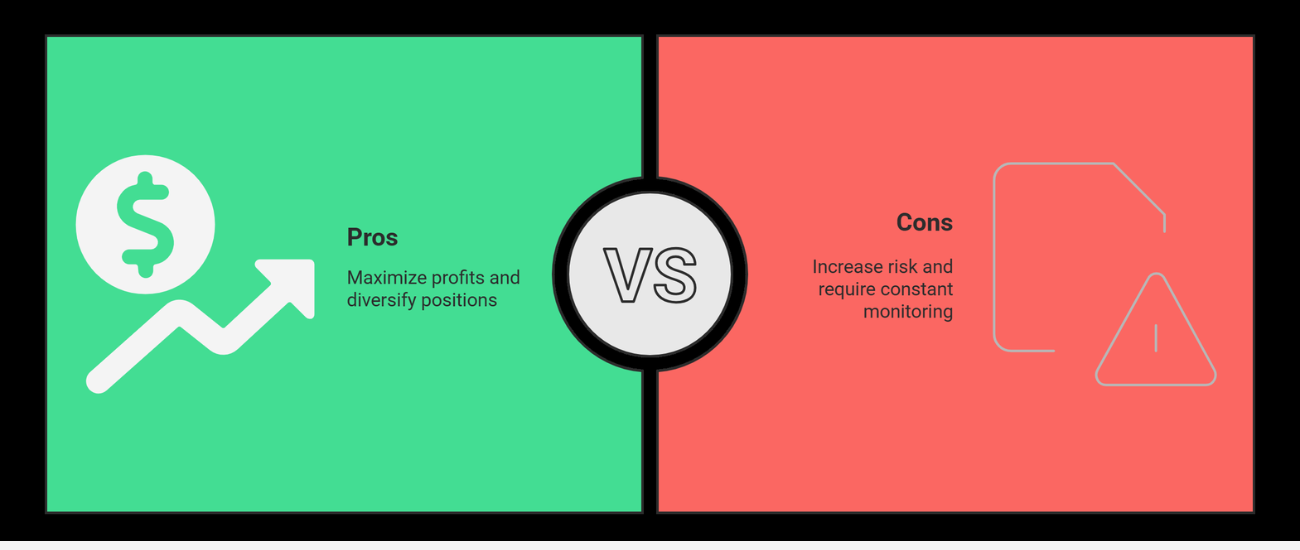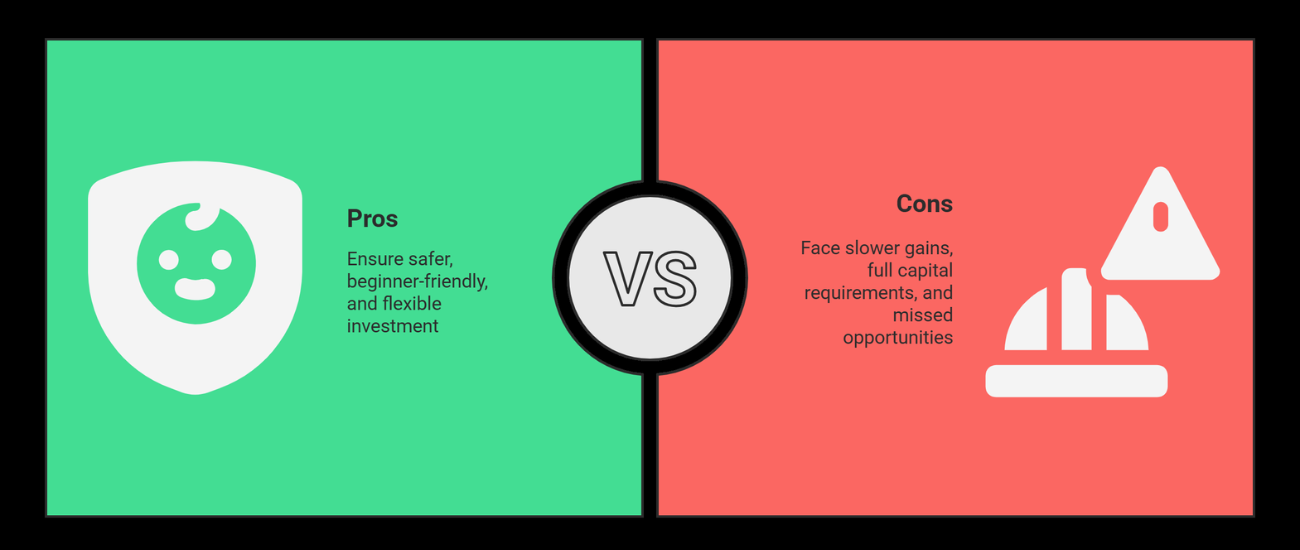2x Leverage vs Spot Trading is a critical choice for traders. 2x leverage allows you to trade with double your capital, amplifying both profits and risks. Studies show that over 70% of leveraged traders face liquidation due to market swings. In contrast, spot trading accounts for nearly 75% of all crypto trades, offering stability and lower risk.
2x Leverage vs Spot Trading is a critical choice for traders. 2x leverage allows you to trade with double your capital, amplifying both profits and risks. Studies show that over 70% of leveraged traders face liquidation due to market swings. In contrast, spot trading accounts for nearly 75% of all crypto trades, offering stability and lower risk.
Leverage trading contributes to 30% of total crypto market volume, with liquidation rates exceeding 25% during high volatility. Spot trading, however, remains the preferred method for long-term investors, with over 60% of traders favouring it for its security. Research from major exchanges shows that traders using high leverage (above 2x) face a 90% risk of wiping out their funds within weeks.
At PriceSync, we provide expert price action setups to help traders make smarter decisions. In this guide, we’ll break down the key differences, risks, and benefits of 2x leverage vs spot trading to help you choose the best approach.
What is Spot Trading?
Spot trading is the process of buying and selling cryptocurrencies at their current market price using only the funds you own, with no borrowing or leverage. It is the simplest and safest way to trade, where you fully own the assets you purchase and can hold or sell them whenever you choose.
Since there is no leverage, you are not borrowing money from an exchange or broker. This eliminates the risk of forced liquidation, where your position gets automatically closed if the price drops. More than 75% of crypto traders prefer spot trading because it provides stability and reduces the chances of losing more money than invested.
Spot trading is known for its low risk and steady profits. Unlike leveraged trading, where small market movements can cause massive losses, spot trading allows you to build wealth gradually. Over 80% of successful long-term investors make money through spot trading rather than risky leverage trades. For example, Bitcoin’s price has increased by 200% per year on average over the past decade, proving that holding spot assets can be highly profitable.
Another key benefit of spot trading is flexibility and control. There are no interest payments, no margin calls, and no risk of losing your position overnight. You can buy and sell at your own pace without the stress of sudden liquidations. Nearly 90% of beginner traders start with spot trading because it is the easiest way to understand the market and grow a portfolio safely.
What is 2x Leverage Trading?
2x leverage trading is when you borrow funds from an exchange to trade with double the amount of your own capital. In simple terms, if you have $1,000, you can trade $2,000 worth of cryptocurrency by borrowing an extra $1,000. This allows you to make larger trades and potentially amplify your profits.
When you use 2x leverage, you're essentially doubling your buying power without needing to invest more money upfront. This is particularly appealing for traders who want to make bigger profits but don’t have a large amount of capital. Studies show that around 40% of active crypto traders use leverage to boost their returns.
However, leverage is a double-edged sword. While it can amplify your profits, it also increases your risk. If the market moves in your favour, you can earn double the earnings as you would with spot trading. For example, a 5% price increase can result in a 10% profit when using 2x leverage. But if the market moves against you, the losses are also doubled. A 5% price drop can lead to a 10% loss.
The risk is high, and if the price drops too much, you could lose all your capital. Around 25% of leveraged traders face liquidation due to sudden market movements. It’s important to understand the risks before diving into leverage trading and to use it strategically.
Key Differences: 2x Leverage vs Spot Trading
When deciding between 2x leverage and spot trading, it’s essential to understand how each approach affects your trading experience. Here’s a breakdown of the key differences between these two strategies:
Risk Level – Spot trading is considered safer because you’re only using the funds you own. This means your risk is limited to your capital, reducing the chance of losing more than you invested. In contrast, leverage trading increases your risk because you are borrowing funds to trade. For example, with 2x leverage, you could lose 100% of your investment if the market moves in the wrong direction. This makes leverage trading riskier but also more rewarding if used carefully.
Profit Potential – One of the biggest advantages of 2x leverage is the potential for higher profits. Since you’re trading with borrowed money, your gains can be doubled compared to spot trading. For instance, if the price of a crypto asset increases by 10%, your profit could be 20%. However, this also means losses are magnified. A 10% drop in price could result in a 20% loss, making leverage trading more volatile. On the other hand, spot trading offers steadier, slower gains but with lower risks.
Market Moves – Spot traders tend to adopt a long-term strategy, often holding their positions for days, weeks, or even months. This means they wait for larger, more gradual movements in the market. Leverage traders have to act quickly. With 2x leverage, a small price change can lead to quick profits or losses, so traders need to stay alert to short-term market movements. In fact, leverage trading requires a faster pace of decision-making than spot trading, as traders must manage their positions more frequently.
Best For – Spot trading is ideal for long-term investors who prefer stability and are willing to hold positions for extended periods. If you’re looking for steady growth over time with less stress, spot trading is the way to go. On the other hand, 2x leverage trading is better for active traders who are comfortable with higher risks and faster decision-making. These traders are looking to take advantage of short-term price fluctuations and are more suited to quick trades. Leverage traders make up around 20-30% of the market, while spot traders are often in the majority, holding positions for longer durations.
Here's a simple comparison table to help you understand the key differences between 2x Leverage and Spot Trading:
Pros and Cons of 2x Leverage Trading
Pros:
Higher profit potential with less initial capital. By using 2x leverage, you can double your potential returns without needing to double your investment.
Faster market gains if the market moves in your favour. Leverage allows you to seize opportunities quickly, maximizing short-term profits.
Diversify trading positions with the same capital. Leverage enables you to open multiple positions, even with limited funds.
More flexibility in trading strategies. Leverage lets you engage in advanced strategies like swing trading or day trading.
Increased capital efficiency. You can gain more exposure to the market without locking up your entire balance.
Cons:
Increased risk – Losses can wipe out your capital quickly if the market goes against you.
Liquidation risk – A small price drop could trigger liquidation, closing your trade and losing your invested funds.
Stress and anxiety – Managing leverage can be stressful, especially during volatile market conditions.
Requires constant monitoring – To avoid liquidation, you need to track your positions closely, which demands more attention and time.
Margin calls – If your position loses too much value, you may be required to deposit more funds to keep your trade open.
Pros and Cons of Spot Trading
Pros:
Lower risk – No liquidation risk means your capital is safer. You only lose what you invest.
Good for beginners and long-term investors – Simple and easy to understand, making it perfect for HODLing or those just starting out in crypto.
No interest fees or margin calls – Since there’s no borrowed money, you won’t face unexpected costs like interest or margin calls.
Stable growth over time – Spot trading is great for steady, long-term returns, especially during a bullish market.
Flexibility in asset ownership – You truly own the crypto you buy, allowing for long-term holdings or use in other DeFi activities.
No pressure for constant monitoring – Once your position is taken, there’s no need to manage or adjust it frequently.
Cons:
Slower gains – Profits depend on market movement, and it may take longer to see significant returns.
Requires full capital – You need the full amount of funds to enter a trade, which may limit your ability to take multiple positions.
Opportunity cost – Without leverage, you might miss out on faster returns that leverage trading offers.
Limited trading volume – Spot trading might not work as well in highly volatile or low-volume markets.
Potential for missed opportunities – While waiting for the market to move, you might miss out on fast, leveraged trades.
Which One Should You Choose?
If you’re just getting started with crypto trading, spot trading is the safer choice. In spot trading, you buy or sell assets using only the money you have, with no borrowed funds. This means you don’t have to worry about losing more than your initial investment. For example, if you buy 1 Bitcoin at $20,000 and its price goes up by 5% to $21,000, you make a $1,000 profit. It’s straightforward and safer, making it a great option for beginners who want to limit risk.
If you’re more experienced and have a good understanding of the market, 2x leverage trading could be a better option to amplify profits. Leverage allows you to borrow funds to trade with more than you actually have. For instance, if you use 2x leverage with your $20,000, you can trade as if you have $40,000. If the price of Bitcoin goes up by 5%, your profit isn’t just $1,000, but $2,000 (since you’re trading with double the capital). However, if the market moves against you, your losses will also be doubled. A 5% drop would result in a $2,000 loss instead of just $1,000.
In terms of risk, spot trading has low risk because you’re only trading what you own, while 2x leverage comes with higher risk due to borrowed funds.
Example:
Spot Trading Example:
You buy 1 Bitcoin at $20,000.If Bitcoin goes up 5%, your profit is $1,000.
If Bitcoin goes down 5%, your loss is $1,000.
2x Leverage Example:
You buy 1 Bitcoin at $20,000 with 2x leverage (trading with $40,000).If Bitcoin goes up 5%, your profit is $2,000.
If Bitcoin goes down 5%, your loss is $2,000.
Which is Better?
New Traders: Stick with spot trading for safer, more predictable results.
Experienced Traders: Consider using 2x leverage to maximize profits, but be mindful of the increased risks.
Best Approach: A balanced strategy using both types of trading can help you manage risk while maximizing returns.
Final thoughts
In conclusion, the choice between 2x leverage vs spot trading comes down to your trading experience and risk tolerance. Spot trading is ideal for those seeking a safer and more stable approach to the market, allowing you to trade with the capital you own without the added risks of leverage. On the other hand, 2x leverage can amplify your profits, but it also increases your exposure to potential losses.
At PriceSync, we provide expert insights and chart setups based on price action analysis to help you navigate both spot trading and leverage trading. Whether you're focusing on spot trading for more controlled positions or looking to explore the higher rewards of 2x leverage, our resources support you in making more informed trading decisions. By mastering price action, you can improve your trading strategies and adapt to various market conditions with confidence.



